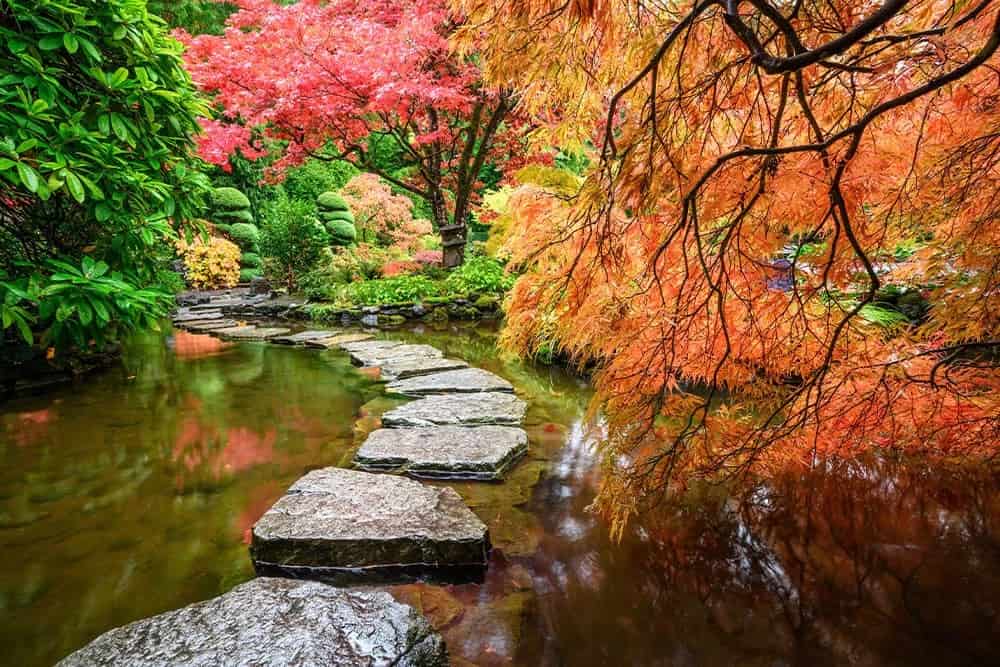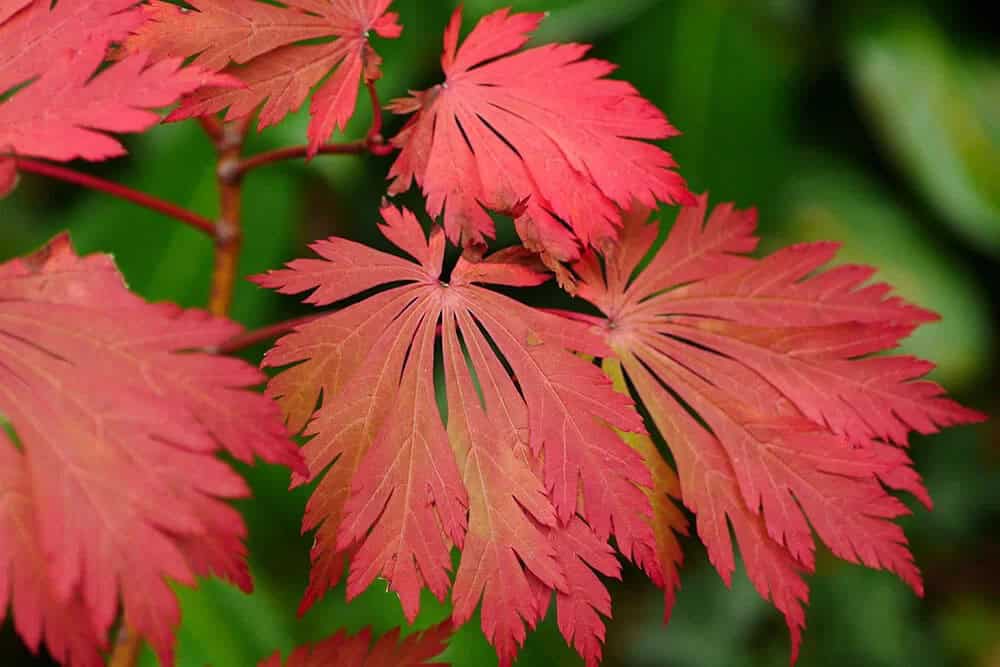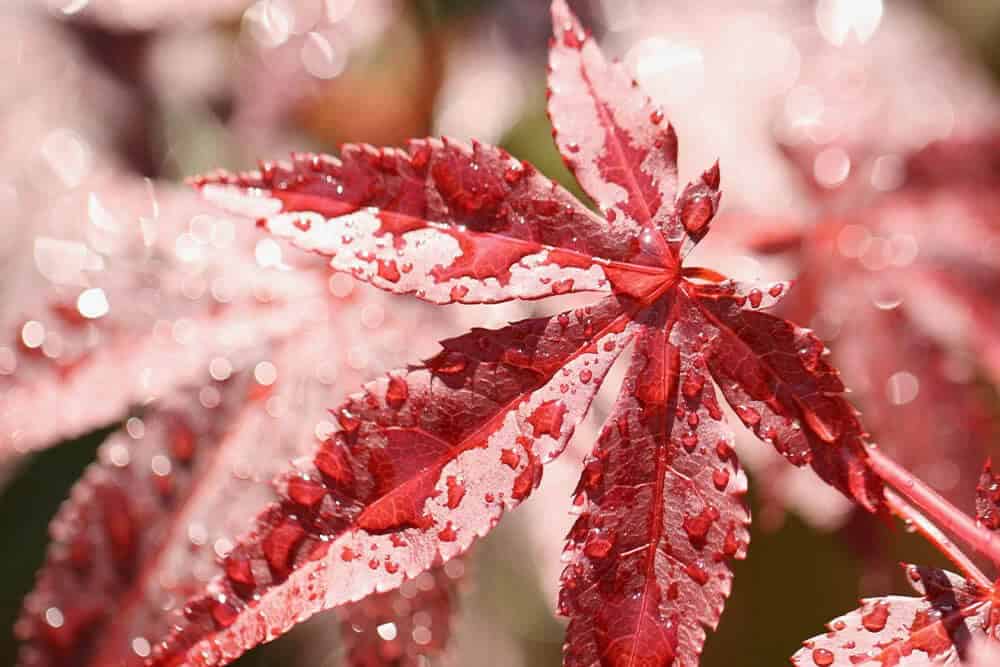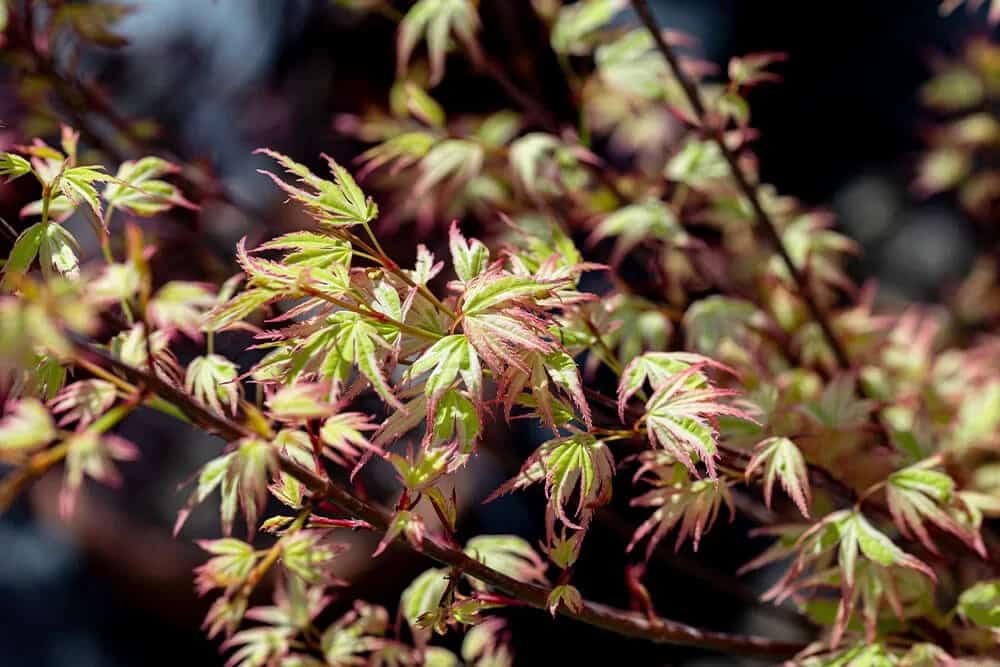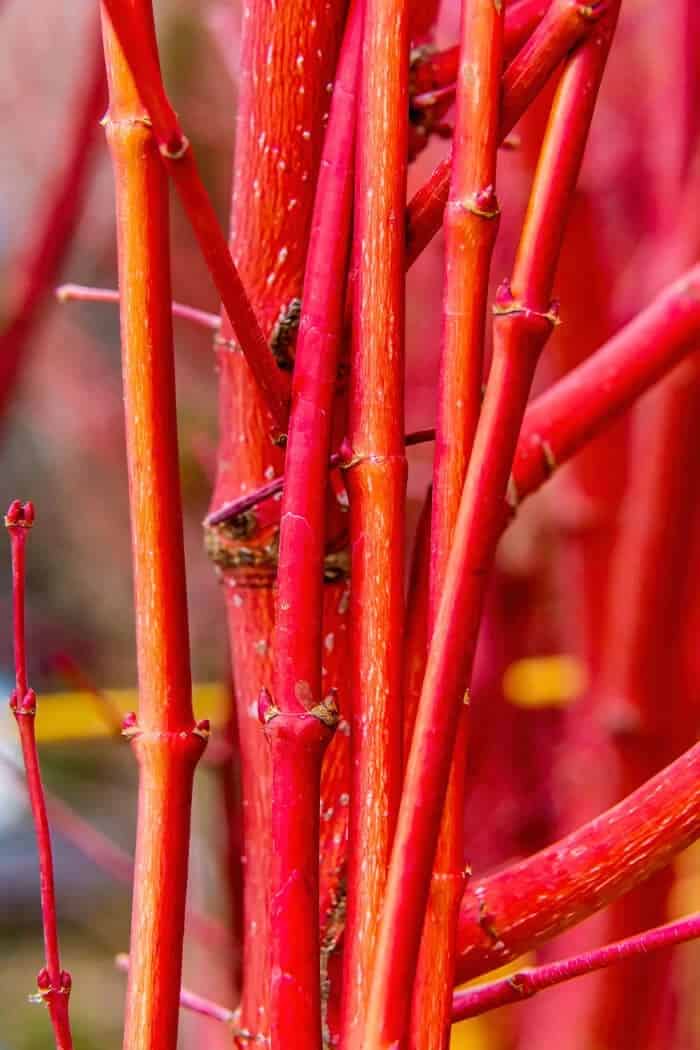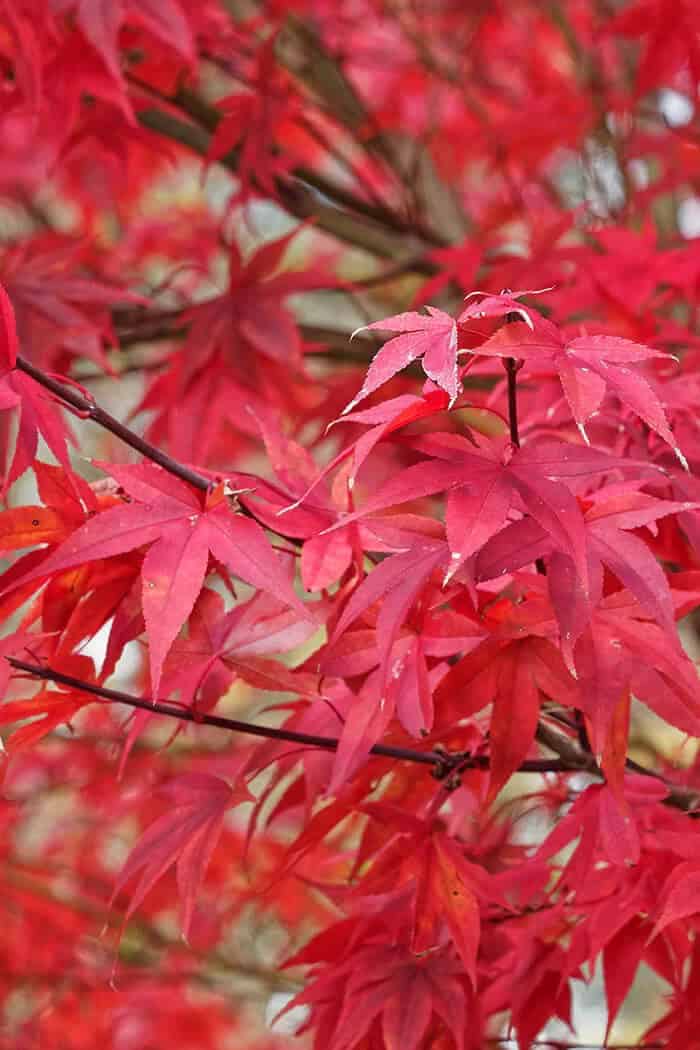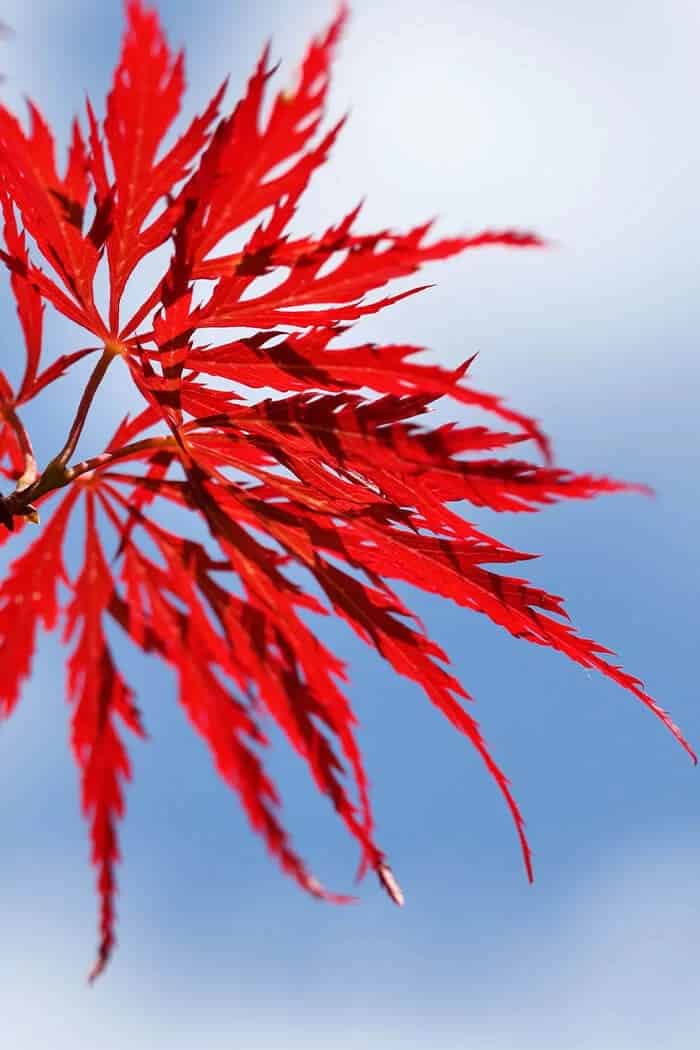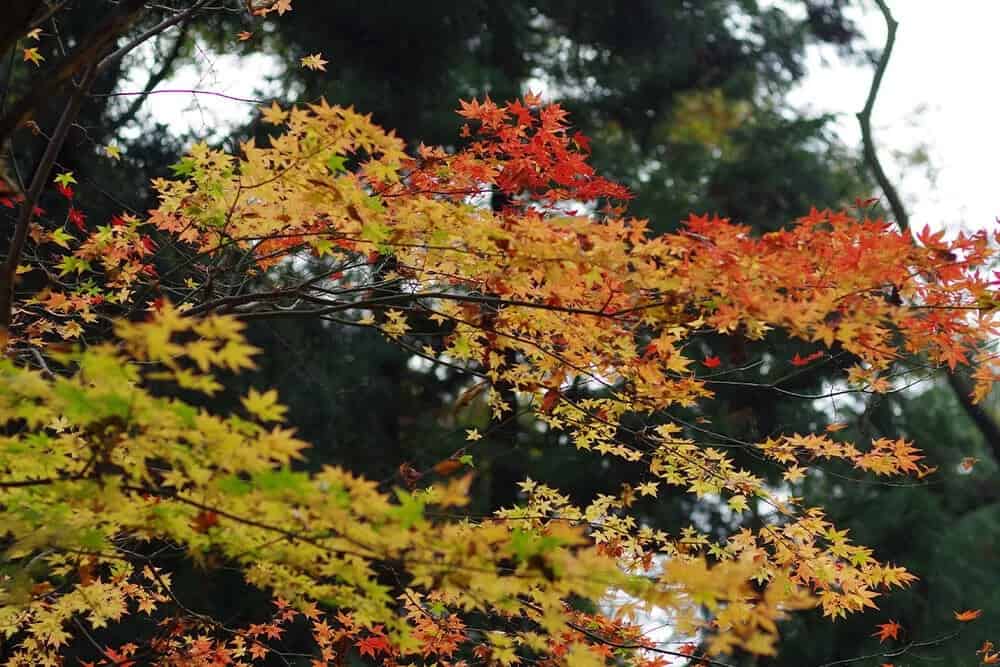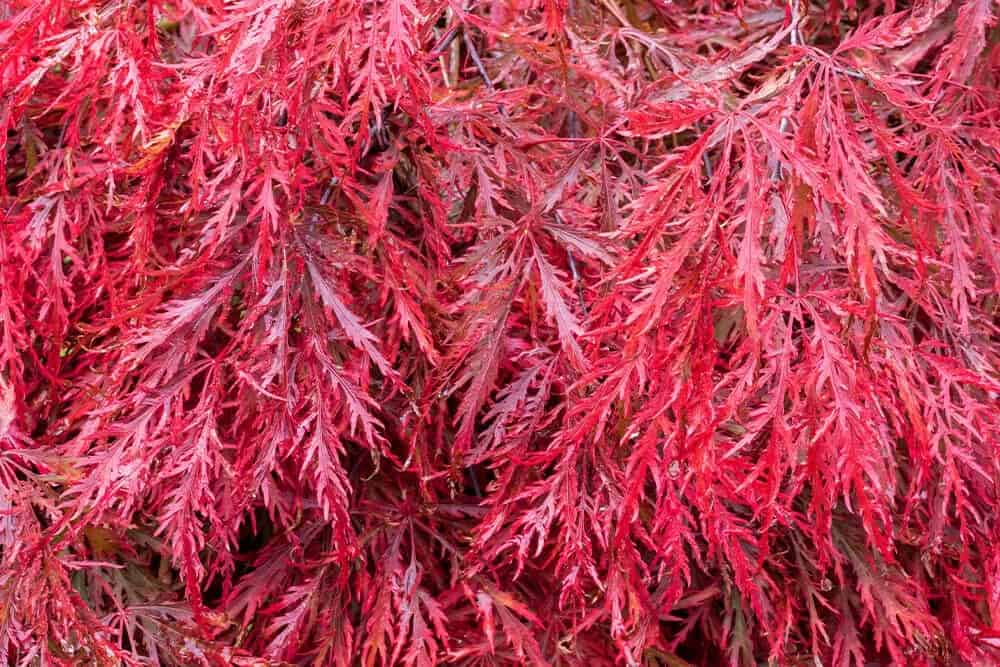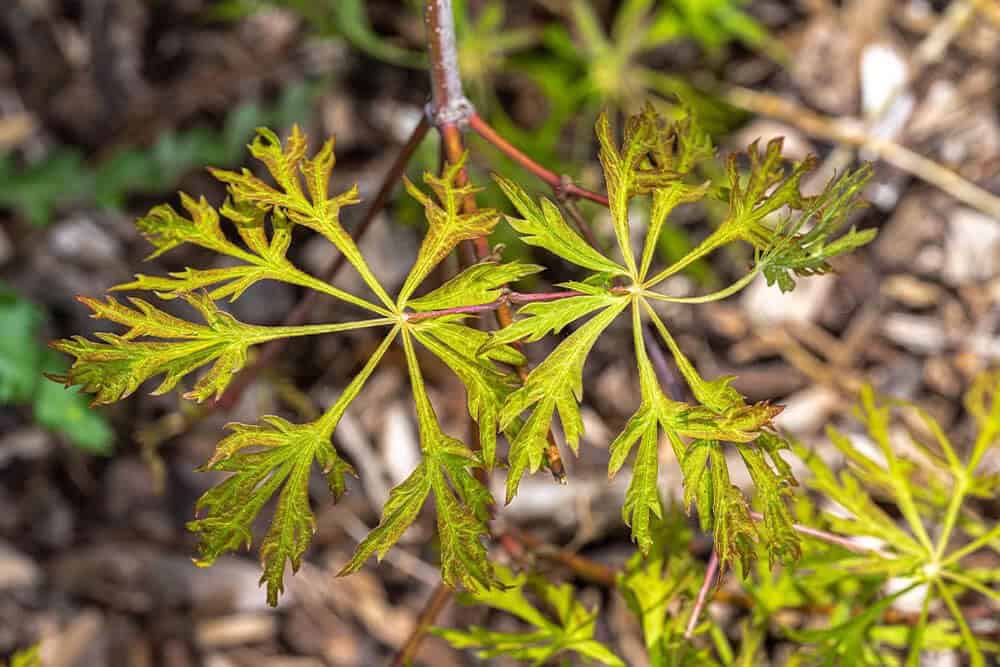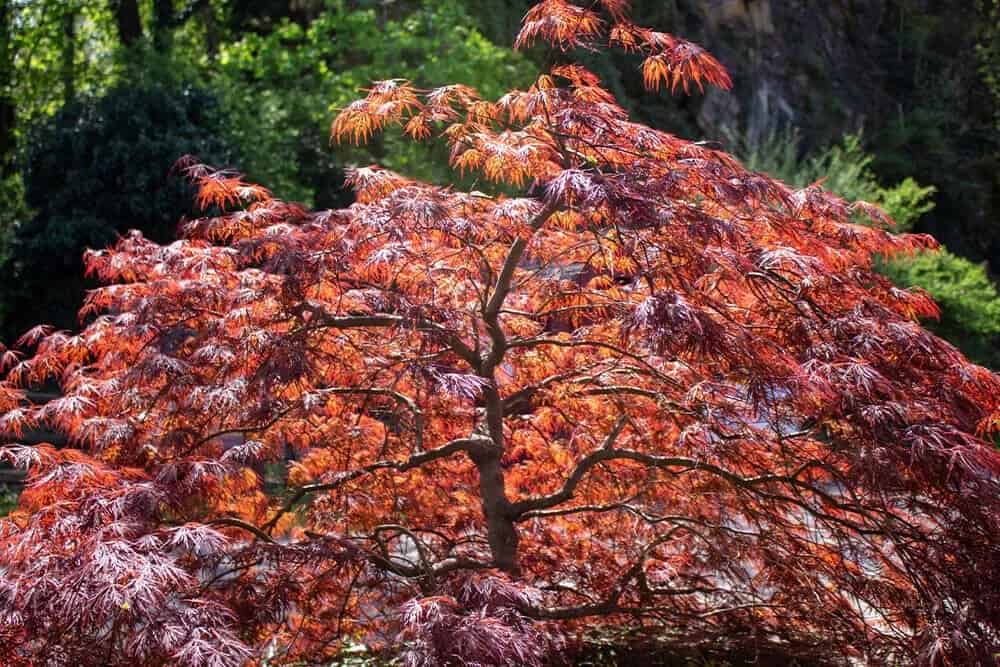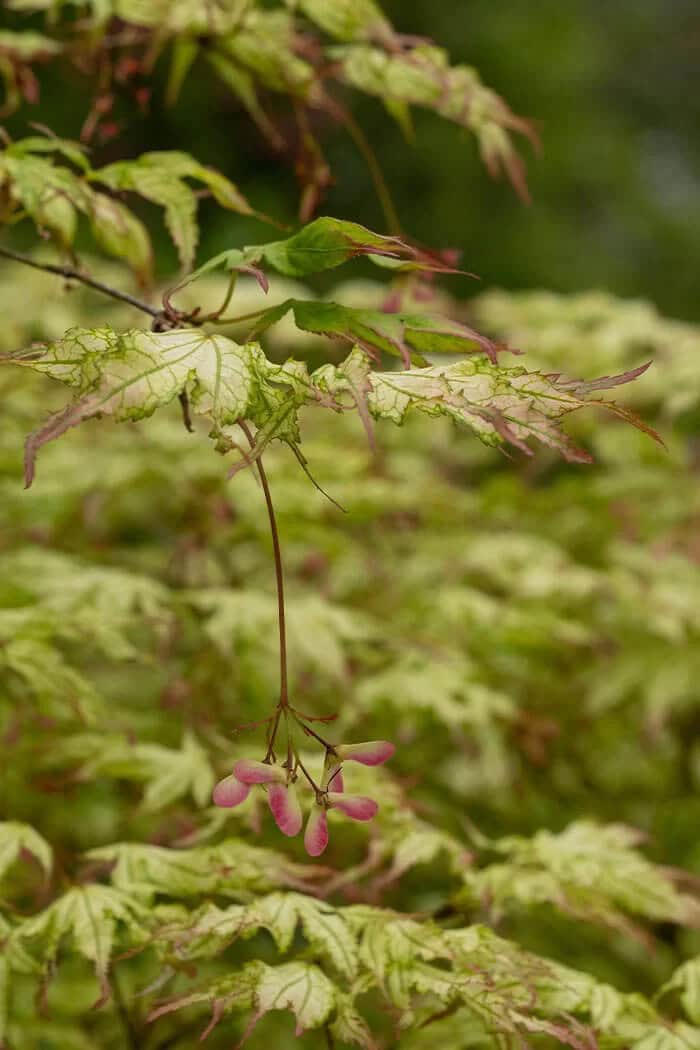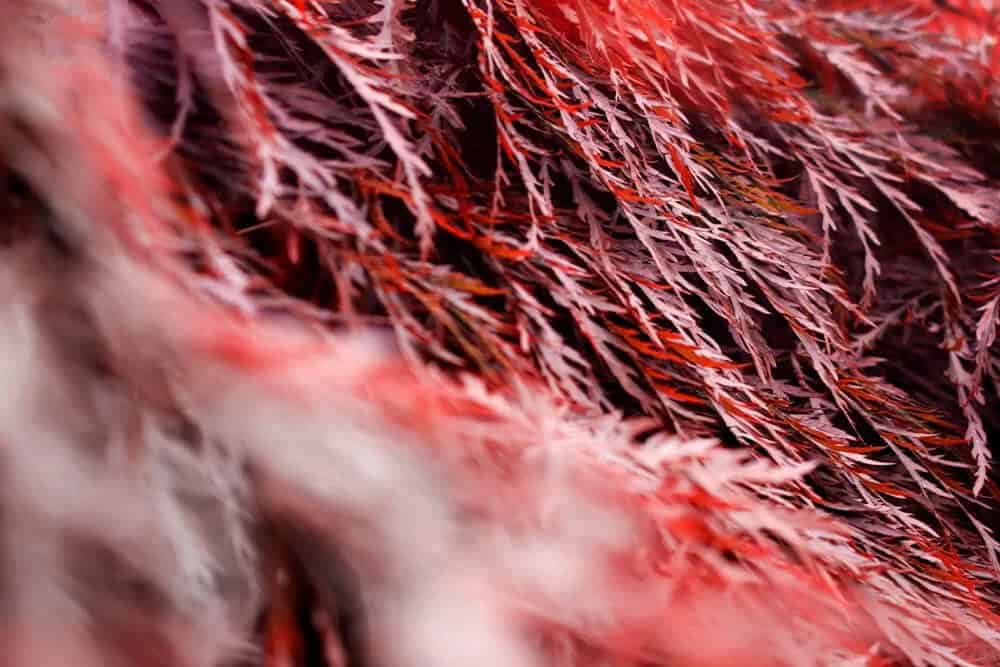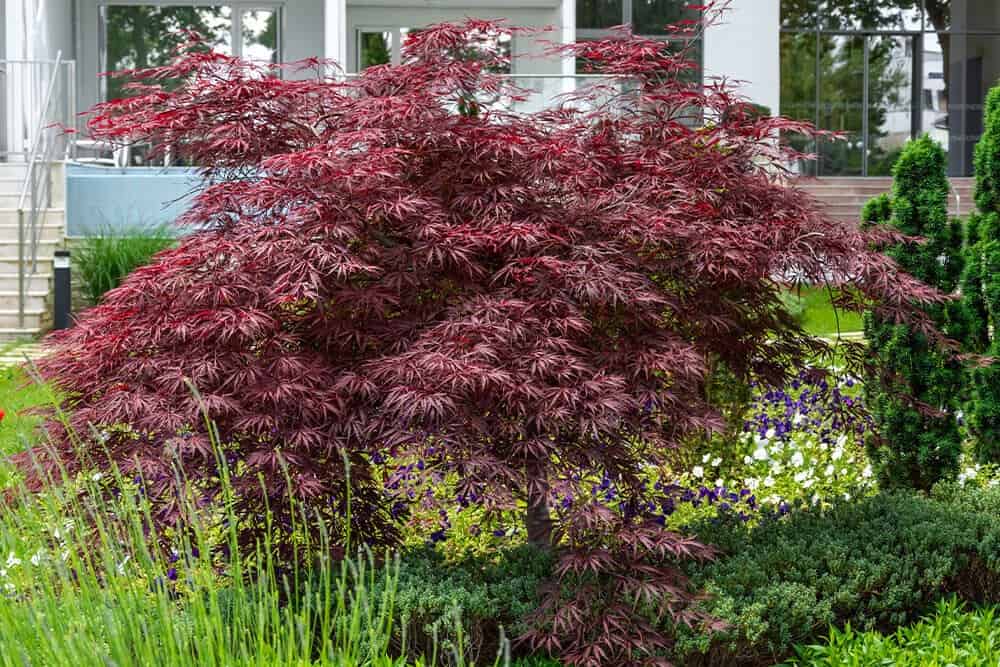Japanese maples are a staple in residential landscape planting designs, with their popularity stemming from the numerous benefits they offer, including stunning foliage and relatively small stature. While many people are familiar with this iconic tree species, few realize the vast array of types that exist. In fact, there are multiple species and cultivated varieties to choose from within the Japanese maple plant group.
This article will delve into each type, providing you with a comprehensive guide to help you select the perfect Japanese maple for your garden.
Key Takeaways
While exploring the world of Japanese maple trees, you may notice that many varieties share common traits due to their close genetic relationships. As you read through our list of top Japanese maple tree varieties, keep an eye out for these recurring themes.
Here’s a sneak peek at the five key takeaways from this article: Japanese maples are primarily composed of three main species – Acer palmatum, Acer japonicum, and Acer shirasawanum, with numerous cultivars emerging from these natural species. Most notable is the striking foliage color displayed by many Japanese maple trees throughout their growing season. Another common characteristic is their relatively small stature.
In contrast to their ornamental appeal, Japanese maple trees are generally devoid of showy flowers.
18 Inspiring Types of Japanese Maples that Are Perfect for Any Garden
Japanese Maple (Acer palmatum)
Acer palmatum, the most widely recognized Japanese maple species, serves as an ideal starting point for our exploration of the best Japanese maple tree varieties. Native to East Asia, this natural cultivar is characterized by its distinctive leaf shape and color, which have become a hallmark of the Japanese maple family.
As the parent species of many other cultivars on this list, Acer palmatum remains a popular choice among gardeners due to its inherent attractiveness, making it an excellent starting point for our journey through the world of Japanese maples.
Aconitifolium Japanese Maple (Acer japonicum ‘Aconitifolium’)
The Aconitifolium Japanese maple, also known as Fernleaf, Full Moon, or Acer japonicum ‘Aconitifolium’, is a dwarf variety that can be confusing to identify due to its multiple names. In reality, this unique tree has several distinguishing features that set it apart from other Japanese maple cultivars. Standing out with its rounded shrub-like form and intricately shaped leaves, the Aconitifolium Japanese maple is an attractive addition to any garden or landscape.
Its compact size makes it an ideal choice for smaller spaces, where it can thrive under the right conditions.
Beni Kawa Japanese Maple (Acer palmatum ‘Beni-kawa’)
While many people assume that Japanese maple trees always boast vibrant red foliage, this is not always the case. In fact, some varieties, like the Beni Kawa, begin with a more subtle green leaf coloration. As the growing season progresses, these leaves will gradually transition to a lighter shade, eventually taking on a warm golden hue. By autumn, the leaves will have fully transformed into a stunning golden color before falling to the ground.
This natural cycle highlights the unique beauty and adaptability of Japanese maple trees.
Bloodgood Japanese Maple (Acer palmatum atropurpureum ‘Bloodgood’)
The Bloodgood Japanese Maple’s reputation as one of the world’s most popular cultivated varieties is well-deserved, thanks in large part to its stunning ornamental features. This small tree stands about 20 feet tall, with a picturesque multi-stemmed habit that adds to its charm. The foliage of the Bloodgood Japanese Maple remains a bold, deep red for nearly all of spring, summer, and fall – hence its common name.
A reliable choice for gardeners, this variety is adaptable to hardiness zones 5 through 9 and proves relatively easy to care for.
Butterfly Japanese Maple (Acer palmatum ‘Butterfly’)
The Butterfly Japanese maple tree’s whimsical appearance is precisely what you’d expect – a delightful fusion of fun and fluttery features. This unique tree diverges from the typical red foliage hues found in other Japanese maples, yet its leaves remain a major draw. Rather than showcasing vibrant reds, the Butterfly Japanese maple’s leaves boast a range of attractive colors, transitioning seamlessly from light green to creamy silvery shades.
What’s more, each leaf features small, pointed lobes that sometimes curl upward, adding remarkable texture and depth to the overall canopy.
Coral Bark Japanese Maple (Acer palmatum ‘Sango-kaku’)
The allure of Japanese maple trees is undeniable, and their unique characteristics only serve to strengthen this appeal. While many admirers focus on the beauty of their leaves and overall shape, it’s equally important to acknowledge the striking features of the coral bark variety. This particular type boasts stems and branches that are ablaze with a vibrant red hue, offering a pop of color even in the depths of winter.
But the Coral bark Japanese maple’s charm isn’t limited to its stems alone – its leaves also boast a delicate beauty, featuring subtle shades of light green punctuated by warm red accents, creating a visually appealing display that’s hard to ignore.
Crimson Queen Japanese Maple (Acer palmatum dissectum ‘Crimson Queen’)
The Crimson Queen Japanese Maple, a dwarf variety, has earned its popularity through its unique characteristics. Its compact size, reaching at most 10 feet tall, makes it an ideal choice for garden spaces with limited growing room. However, what truly sets this cultivar apart is its striking weeping growth habit and delicate, lace-like foliage. The plant’s visual appeal is undeniable, making it a standout even in smaller gardens.
Its ability to thrive in confined areas while still boasting an eye-catching appearance has solidified the Crimson Queen Japanese Maple’s place as a fan favorite among horticulturists.
Emperor 1 Japanese Maple (Acer palmatum ‘Wolff’)
The Emperor 1 Japanese Maple tree stands out from its counterparts with its moderate size, making it an excellent choice for various growing locations. The subtle differences in its foliage are a testament to the versatility of Japanese Maples, and the Emperor 1 is no exception. Its leaves burst forth in vibrant red hues during springtime, boasting striking contrasts on their undersides where they transition into a light green shade.
This tree’s upright vase shape allows it to maintain an aesthetically pleasing silhouette from both near and far, further solidifying its appeal as a visually stunning addition to any landscape.
Filigree Japanese Maple (Acer palmatum dissectum ‘Filigree’)
The filigree Japanese maple tree boasts a unique charm derived from its striking weeping habit and vibrant foliage. Reaching maturity at around five feet tall, this compact cultivar spreads equally as wide, showcasing its intricate texture through each leaflet’s complex shape. A notable feature of the filigree Japanese maple is its foliage, which remains a light green hue throughout spring and summer, distinct from other Japanese maples.
As autumn arrives, the leaves transform into a warm, golden orange color, preceding the onset of winter.
First Ghost Japanese Maple (Acer palmatum ‘First Ghost’)
Japanese maple varieties have already impressed us with their foliage, but this one may take the crown for its truly spectacular display. The first ghost Japanese maple tree boasts leaves with long, wavy lobes resembling fingers. As you gaze upon these unique leaves, you’ll notice they can shift in color, often showcasing a light- yellow hue with wine-colored tinges at the edges.
The veins of each leaf take on a darker green tone, creating an even more striking contrast that adds to the visual drama of this exceptional tree.
Garnet Japanese Maple (Acer palmatum dissectum ‘Garnet’)
The garnet Japanese maple tree stands out for its captivating combination of vibrancy and unique growth habits. This compact tree defies expectations by marrying an upright stem with branching that cascades slightly, creating a weeping effect. Its leaves are particularly noteworthy for their delicate, lacy texture – even more refined than those of other lace-leaved varieties.
The harmonious union of these characteristics makes the garnet Japanese maple an attention-grabbing addition to any garden or landscape, always drawing the eye to its unique charm.
Golden Full Moon Japanese Maple (Acer shirasawanum ‘Aureum’)
The Golden Full Moon Japanese Maple tree diverges from its peers due to its unique botanical origin – it’s a cultivar of Acer shirasawanum rather than Acer palmatum or Acer japonicum. What sets it apart is the shape and color of its leaves, which are more rounded and lack the dramatic lobes and sinuses found in other Japanese maple species.
For most of the year, these leaves appear light green, but as autumn unfolds, they transform into a vibrant golden orange hue, making for a striking visual display.
Green Cascade Japanese Maple (Acer japonicum ‘Green Cascade’)
While the previous entry on our list featured leaves of simplicity, the green cascade Japanese maple tree takes complexity to new heights. Its leaves are characterized by numerous feathery lobes, each with an intricate, often jagged, edge that adds visual interest to their delicate appearance. The green hue during the growing season is just the beginning, as this tree transforms into a stunning canvas of deep red hues in the fall, showcasing its remarkable color palette.
Laceleaf Japanese Maple (Acer palmatum dissectum)
The primary Japanese maple variety, Acer palmatum, has spawned numerous cultivars and subgroups, including Acer palmatum dissectum. This latter species, also known as laceleaf Japanese maple or by other names, is a dwarf variety characterized by deeply cut leaves that resemble lace. Notably, the laceleaf Japanese maple tree tends to develop a multi-stemmed habit and remains relatively small due to its dwarf nature.
Peaches and Cream Japanese Maple (Acer palmatum ‘Peaches and Cream’)
While the peaches and cream Japanese maple tree may not be as widely available as some other varieties, its unique characteristics make it a worthwhile search effort. The standout feature of this rare tree is its light peach-colored foliage, which sets it apart from many other options. Beyond its striking leaves, the peaches and cream Japanese maple also boasts an impressive growth habit, characterized by multiple main stems that radiate outward to create a broad canopy with great visual impact.
Red Dragon Japanese Maple (Acer palmatum dissectum ‘Red Dragon’)
While some Japanese maple tree varieties boast leaves that transition from lighter hues to deeper tones as the seasons progress, the red dragon variety defies this trend. Its leaves burst forth with a rich, almost purplish red color, only to transform into a bright, vibrant red towards the end of the growing season.
Notably, these leaves feature a lacy texture and dangle from branches that have a distinctive weeping habit, adding an extra layer of visual interest to this tree’s already striking appearance.
Tamukeyama Dwarf Japanese Maple (Acer palmatum dissectum ‘Tamukeyama’)
The Tamukeyama dwarf Japanese maple stands out among its peers by harmoniously combining the most desirable traits of this beloved species. One of its striking features is the lace-like foliage, which boasts a rich, reddish-purple hue that’s truly vibrant. The tree’s canopy is equally captivating, with its broad and weeping shape creating a beautiful display. Furthermore, this option proves to be remarkably user-friendly, reaching a moderate size that doesn’t require excessive maintenance.
Its compact growth makes it an ideal choice for gardeners of all skill levels.
Vitifolium Japanese Maple (Acer japonicum ‘Vitifolium’)
The Vitifolium Japanese maple’s classification can be debated, as it stands around ten feet tall and boasts a rounded shape. Its leaves are a notable exception among Japanese maples, sporting a unique rounded shape and maintaining a lovely hue throughout the year. However, to preserve their best appearance, it is crucial to plant this variety in areas with partial shade or dappled sunlight, as full sun can lead to discoloration.
The vast array of Japanese maple species means there is a wealth of information surrounding these plants. While our list provides an overview of the best varieties, delving deeper into the subject will be necessary to become well-versed. To facilitate this journey, we’ve included answers to frequently asked questions about Japanese maples, providing valuable insights for gardeners seeking to expand their knowledge.
Frequently Asked Questions About Japanese Maples
Are There Different Types of Japanese Maples?
While there’s a wide range of Japanese maple tree varieties, some species are significantly more prevalent than others. The three primary species include Acer palmatum, Acer japonicum, and Acer shirasawanum, with Acer palmatum being the most widely distributed. Furthermore, the natural charm of these trees has inspired countless cultivated varieties, featuring unique characteristics such as varying sizes, growth patterns, colors, and more.
It’s crucial to recognize the different types of Japanese maples before selecting one for your yard, considering factors like size, color, and growth habits.
What is the Most Beautiful Japanese Maple Variety?
When it comes to determining the most striking Japanese maple, personal taste plays a significant role. Take the Laceleaf Japanese Maple, for example – if you appreciate unique textures, one of its cultivars might just take the top spot. On the other hand, those seeking a more compact tree will likely find a dwarf variety to be the most breathtaking.
Additionally, individuals who adore the prolonged red foliage of a Japanese maple will want to focus on varieties that highlight this characteristic. Ultimately, the notion of the most beautiful Japanese maple is subjective, and there are numerous options available to cater to individual preferences.
What is the Most Popular Japanese Maple Tree?
Japanese maples offer a wide range of options for enthusiasts, with both the parent species, Acer palmatum, and various cultivars enjoying popularity. Among these, the Bloodgood Japanese maple stands out due to its striking leaf colors, which transition from dark purple to light green throughout the seasons.
Similarly, other notable cultivars like Emperor I and Crimson Queen have earned their place in the hearts of many enthusiasts, primarily due to their unique characteristics and stunning foliage.
Which Japanese Maple is Always Red?
What sets Japanese maple trees apart from other species is their unique ability to maintain a deep red hue throughout much of the growing season. This distinctive characteristic can be attributed to the distinct pigmentation patterns found in the leaves of these plants. Specifically, Japanese maples are characterized by lower levels of chlorophyll, the pigment responsible for green coloration in most plant foliage.
As a result, their leaves tend to retain a reddish tint even when other plants would typically display more vibrant greens.
Why is My Japanese Maple Green and Not Red?
While leaf color changes are often expected in Japanese maple trees, some variations might be attributed to underlying issues or complications. Nevertheless, it’s more probable that the tree’s natural characteristics come into play. Many varieties of Japanese maples display a shift from deep red hues to lighter, greener shades during the warmest and sunniest periods of the year.
Before jumping to conclusions about your tree’s health, take time to observe its behavior and determine if this is a normal fluctuation in leaf color.
18 Elegant Types of Japanese Maples that Have Lovely Leaves
While initially diving into the world of Japanese maple trees, it’s easy to overlook the incredible diversity that lies within. In reality, there are numerous species and cultivars to explore, each boasting its own distinct characteristics. As you delve deeper, you’ll discover that even the most popular varieties share a common thread – subtle nuances that set them apart from one another.
Ultimately, the perfect Japanese maple tree for you will be the one whose unique features resonate with your personal preferences.
